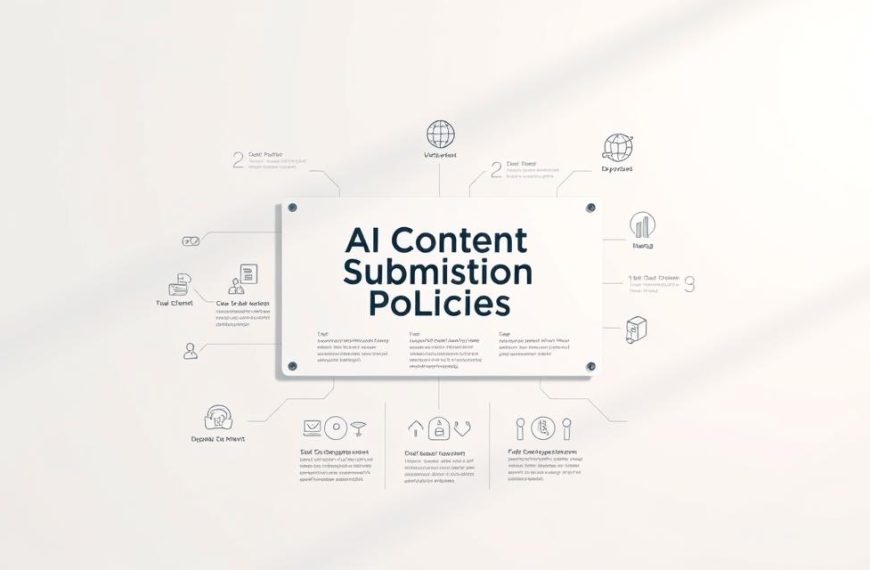The integration of artificial intelligence into the British business landscape has become a defining feature of modern operations. Recent figures reveal 15% of UK companies now utilise at least one AI-driven tool, equating to over 430,000 organisations. This shift reflects both technological progress and evolving corporate priorities.
Adoption rates vary dramatically by sector and company size. Larger enterprises dominate early implementation efforts, while smaller firms often prioritise cost-efficiency over experimental technologies. Approximately 62,000 businesses currently test AI solutions through pilot schemes, with nearly 300,000 planning future adoption.
Global comparisons highlight intriguing patterns. India leads worldwide uptake at 59%, contrasting sharply with more cautious European markets. These disparities underscore how cultural attitudes and infrastructure influence technological integration.
Behind the statistics lies a complex reality. Many organisations incorporate AI for specific functions like data analysis or customer service automation rather than enterprise-wide transformation. This targeted approach allows measurable benefits without overwhelming existing systems.
Understanding these trends proves vital for decision-makers evaluating AI strategies. The intelligence gathered from adoption patterns helps establish realistic benchmarks and identify sector-specific opportunities. As competition intensifies, separating genuine innovation from superficial claims becomes increasingly critical.
Understanding the AI Revolution in UK Business
In 2025, the adoption of intelligent systems marks a pivotal transformation across UK industries. Organisations now classify artificial intelligence through five core technologies: machine learning, natural language processing, computer vision, data analytics, and specialised hardware. This framework separates genuine innovation from basic automation.
Defining AI in the Modern Business Context
The contemporary understanding of AI extends beyond chatbots or recommendation engines. True adoption requires systems capable of learning, adapting, and improving without explicit programming. For instance, a retail firm using computer vision for inventory management demonstrates practical implementation rather than theoretical experimentation.
Overview of the 2025 Business Landscape
UK enterprises increasingly prioritise technology that delivers immediate operational value. Nearly 300,000 firms plan to implement AI solutions within two years, shifting from pilot schemes to full-scale integration. This evolution reflects a maturing market where early adopters gain measurable advantages in efficiency and customer insights.
Decision-makers now recognise AI’s role in reshaping how work gets done. From predictive maintenance in manufacturing to sentiment analysis in marketing, intelligence tools create new competitive dynamics. The global AI market’s projected £1.4 trillion valuation by 2030 underscores this strategic imperative.
Current State of AI Adoption: Key Data Insights
UK corporate strategies reveal striking contrasts in technological implementation. Resource allocation and industry demands create distinct patterns, with intelligent systems becoming operational priorities for some while remaining aspirational for others.
Statistical Snapshot of AI Usage in the UK
Data management tools lead uptake, deployed by 9% of British firms. Natural language processing follows at 8%, with machine learning systems trailing slightly. This hierarchy suggests organisations prioritise solutions offering immediate analytical advantages.
Hardware investments remain limited, adopted by only 5% of companies. The gap between software and infrastructure adoption highlights strategic focus areas. Early implementers typically target specific operational challenges rather than pursuing comprehensive overhauls.
Adoption Rates by Business Size and Sector
Enterprise scale dictates implementation capacity. While 68% of large corporations employ AI tools, just 15% of smaller ventures follow suit. Three key factors drive this disparity:
- Access to technical expertise
- Budget allocation flexibility
- Data infrastructure maturity
Sector-specific trends further complicate the landscape. Information technology and legal services lead with 29% adoption rates. Conversely, retail and hospitality sectors languish below 12%, constrained by different operational models and customer interaction priorities.
This report underscores how organisational characteristics shape technological integration. As market pressures intensify, these patterns may prompt strategic realignments across underperforming industries.
How Many Businesses Are Using AI – A Deep Dive
Corporate adoption of intelligent systems reveals striking contrasts when examining organisational scale. While 432,000 UK enterprises now leverage at least one AI technology, implementation depth varies exponentially with company size.
Comparative Analysis Across Small, Medium and Large Firms
Three distinct patterns emerge:
- Small firms (15% adoption): 49,300 deploy 4-5 technologies, often in customer-facing roles
- Medium enterprises (34% adoption): Prioritise operational tools like inventory management systems
- Large corporations (68% adoption): 480 leaders combine multiple solutions for enterprise-wide transformation
Insights from Capital Economics and DCMS Reports
Recent analyses highlight natural language processing as the most widely adopted technology, followed by machine learning. A DCMS spokesperson noted:
“The gap between basic and advanced usage narrows as sector-specific solutions mature. Even smaller firms achieve impact through targeted implementations.”
Resource availability explains part of the disparity – large companies invest 14 times more in AI infrastructure than SMEs. However, innovative smaller firms demonstrate that strategic focus can compensate for budgetary constraints. The data suggests scaling AI adoption requires aligning technological capabilities with core operational needs rather than pursuing blanket solutions.
Routes to AI Integration: In-house Development versus Outsourcing
UK organisations face critical decisions when implementing artificial intelligence solutions. Current data shows a three-way split: 172,000 firms build custom systems internally, 171,000 purchase ready-made tools, and 88,500 rely on external developers. This distribution reflects strategic priorities across different operational scales.
Benefits and Drawbacks of In-house AI Development
Medium-sized enterprises lead internal development efforts, with 49% creating bespoke solutions. This approach allows tailored applications addressing unique workflow challenges. However, maintaining dedicated technical teams proves costly – a barrier for 66% of smaller firms.
Internal projects often start with data management systems, forming the foundation for advanced analytics. One logistics company reported 37% efficiency gains after developing proprietary route optimisation tools. Yet ongoing updates require continuous investment in both technology and staff training.
Evaluating Off-the-Shelf and External Solutions
Pre-built platforms attract firms seeking immediate results without technical debt. These solutions typically handle common tasks like customer sentiment analysis or inventory forecasting. Implementation costs average 62% less than custom builds, according to recent sector reports.
External developers bridge the gap for 20% of adopters, offering specialised expertise on demand. A financial services director noted: “Outsourcing complex fraud detection models let us access cutting-edge technology without expanding our IT department.” However, reliance on third parties can limit long-term adaptability as business needs evolve.
Economic Impact: Expenditure and Labour Trends in AI
Financial commitments to intelligent systems reveal shifting priorities across UK industries. Investment patterns expose fundamental differences in strategic approaches between organisations of varying scales.
Capital Investment in AI Technologies
Spending disparities between enterprises highlight resource allocation strategies. In 2020:
- Small firms invested £9,500 average per company
- Medium enterprises allocated £380,000 each
- Large corporations spent £1.6 million per business
This 160:1 ratio between large and small operators demonstrates how operational scale influences technological ambition. Over 75% of total expenditure originated from corporations with 250+ employees.
Labour Costs and Future Spending Projections
Workforce expenses dwarf technology investments, with £46.0 billion spent on AI-related roles versus £16.7 billion on tools. A tech consultancy director observed:
“Hiring data scientists now consumes 34% of IT budgets for early adopters – this figure could reach 50% by 2025.”
Projections indicate spending could hit £30.3 billion by 2025 through 12.6% compound annual growth. Two scenarios emerge:
- Conservative 10% annual growth rate = £27.2 billion
- Accelerated 16% trajectory = £35.6 billion
These forecasts confirm AI’s transition from experimental tool to core operational expenditure. With labour costs rising faster than technology prices, firms must balance talent acquisition with scalable solutions.
Sectoral Perspectives: AI in Finance, Healthcare and Retail
Industry-specific applications of intelligent systems reveal striking contrasts in implementation strategies. Three sectors – finance, health, and retail – demonstrate how operational priorities and regulatory landscapes shape technological adoption.
Financial Services: Adoption, Projections and Case Studies
Banks and investment firms lead AI integration, driven by generative tools’ profit potential. Recent analysis suggests these technologies could boost US banking profits by $340 billion. UK institutions mirror this trend, deploying natural language processing for customer interactions and risk assessment models.
One high-street bank reduced fraud cases by 47% using transaction pattern recognition. Such successes explain why 68% of financial services providers plan expanded AI budgets by 2026.
Healthcare and Retail: Progress and Future Prospects
The health sector adopts cautiously due to patient safety regulations. Despite a projected $208.2 billion global market by 2030, only 22% of UK healthcare providers use AI clinically. Current applications focus on administrative tasks like appointment scheduling.
Retailers embrace computer vision for stock management and customer analytics. With the sector’s AI market forecast to hit $85 billion by 2032, innovations range from smart shelves to personalised promotions. A leading UK chain reported 31% fewer stockouts after implementing image recognition systems.
These differences underscore why sector-specific AI applications prove more effective than generic solutions. While finance prioritises profit growth, health focuses on compliance and retail on operational efficiency.
Challenges and Opportunities in AI Adoption
Organisations navigating intelligent systems face dual realities. While early adopters report efficiency gains, implementation hurdles persist – particularly for customer-focused ventures. Strategic responses to these challenges could reshape competitive dynamics.
Barriers to Wider Uptake in SMEs and B2C Firms
Three primary obstacles hinder smaller operators. Limited budgets restrict access to advanced technology, with 63% of micro-enterprises citing costs as prohibitive. Skills shortages compound the issue – 58% of retail firms lack staff trained in machine learning applications.
Trust deficits further complicate adoption. Only 29% of consumer-facing companies believe clients accept AI-driven services. One hospitality manager noted: “Guests prefer human interactions for complex requests, despite automation potential.”
Opportunities for Upskilling and Bridging the Talent Gap
Forward-thinking businesses counter shortages through targeted initiatives. Apprenticeship schemes in data science now attract 14% more applicants than traditional IT roles. Collaborative platforms enable knowledge-sharing between sectors – a tactic 37% of manufacturers employ.
Partnerships with academic institutions show particular promise. Six UK universities recently launched AI certification programmes tailored for SME workforces. Such efforts help firms implement solutions without overhauling existing work structures.


















